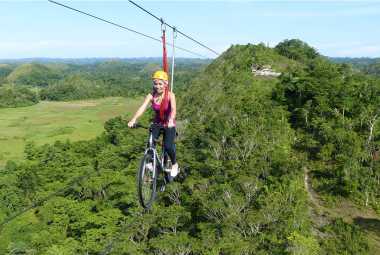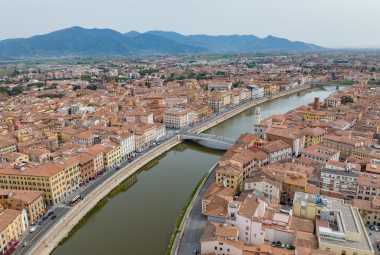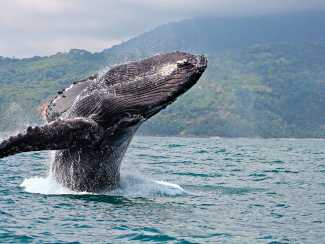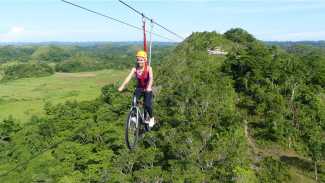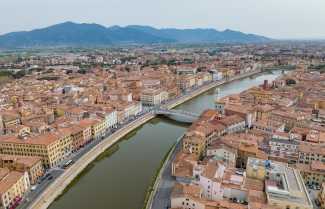Image by travelsewhere.net
*Vacation Mode is a for-profit site. It contains paid banner advertisements that are generated and managed by a third-party network. This site also includes relevant affiliate links (both in the content and on the sidebar) all of which we do our best to clearly mark as such.
The Bay of Fires and Binalong Bay, nestled along Tasmania's northeastern coast, are jewels in the crown of Australian natural beauty. These locations have become increasingly popular among travelers seeking pristine beaches, stunning landscapes, and a touch of adventure. This article delves into the splendor of these areas, offering insights into their history, attractions, and everything that makes them must-visit destinations.
History and Origin
The Bay of Fires, named for the orange-hued granite rocks that line its coastline, has a history that dates back thousands of years. Its name, however, originates from Captain Tobias Furneaux’s observation in 1773 of the Aboriginal fires along the coast. Binalong Bay, a serene fishing village, serves as the gateway to the Bay of Fires and has its unique historical charm.
Tasmania's hidden gem: Bay of Fires
Video by Getaway
Geographical Location
Located in northeastern Tasmania, the Bay of Fires stretches over 50 kilometers from Binalong Bay to Eddystone Point. Accessible by car from Launceston or Hobart, its remote location adds to its untouched allure. The clear turquoise waters and white sandy beaches are framed by a rugged coastline, offering breathtaking views at every turn.
Natural Beauty
The area is renowned for its extraordinary natural beauty. The white sandy beaches contrast sharply with the fiery orange boulders, creating a photographer’s paradise. The Bay of Fires is also home to diverse wildlife, including bird species and marine life, making it a haven for nature lovers.
Cultural Significance
The region holds significant cultural value, particularly for the Aboriginal community. It’s a place rich in traditional heritage, with numerous sites of historical and spiritual importance. The modern cultural impact is also evident through local art and festivals, which celebrate the area's unique identity.
Tourist Attractions

From secluded beaches to scenic hikes, the Bay of Fires offers a plethora of activities. Kayaking, fishing, and snorkeling are popular among visitors. The area also boasts several walking trails, offering stunning views of the coastline and the opportunity to explore the natural surroundings.
Accommodation Options
Accommodations in the Bay of Fires range from luxury lodges to camping sites, catering to all preferences and budgets. Binalong Bay and the surrounding areas offer quaint bed and breakfasts, beachfront villas, and eco-friendly retreats, providing a perfect base for exploring the region.
Best Time to Visit
The best time to visit the Bay of Fires is during the Australian summer months, from December to February. This period offers the most pleasant weather for beach activities and exploration. However, the shoulder seasons of spring and autumn also provide a quieter and equally beautiful experience.
Local Cuisine and Dining
The region is known for its fresh seafood, with local specialties including Tasmanian scallops and oysters. Several restaurants and cafes in Binalong Bay and nearby towns offer delicious local and international cuisine, with stunning views of the ocean.
Safety and Travel Tips
While the Bay of Fires is relatively safe, it’s important for visitors to be mindful of natural hazards such as strong currents and wildlife. Travelers are advised to follow local guidelines and respect the natural environment to ensure a safe and enjoyable visit.
Photography and Memories
The picturesque landscape of the Bay of Fires is a dream for photographers. Key spots for capturing the essence of the area include the lichen-covered boulders at Binalong Bay and the panoramic views from the various lookouts along the coastline.
Environmental Conservation
The preservation of the Bay of Fires is a priority, with efforts focused on maintaining its natural beauty and biodiversity. Visitors are encouraged to practice sustainable tourism by minimizing their environmental impact and supporting local conservation initiatives.
Nearby Attractions
The region offers more than just its famed beaches. Nearby attractions include the Mount William National Park, offering additional hiking trails and wildlife spotting opportunities, and the charming town of St Helens, known for its history and hospitality.
Testimonials and Reviews
Visitors to the Bay of Fires often speak of its tranquility, natural beauty, and the warm hospitality of the locals. Online reviews and testimonials highlight it as a top destination for those seeking a blend of adventure and relaxation in a stunning natural setting.
Conclusion
The Bay of Fires and Binalong Bay are not just destinations; they are experiences that stay with you long after you leave. Their unique blend of natural beauty, cultural significance, and adventure opportunities make them a must-visit for anyone traveling to Tasmania.
FAQs
1. What is the best way to get to the Bay of Fires?
The best way to reach the Bay of Fires is by car from Launceston or Hobart. There are also guided tour buses available from major cities in Tasmania.
2. Are there any guided tours available in the Bay of Fires?
Yes, there are several guided tours available, offering various activities including hiking, bird watching, and photography tours.
3. What type of wildlife can be seen in the Bay of Fires?
Visitors can see a diverse range of wildlife including native birds, marsupials, and marine life such as dolphins and seals.
4. Are there any restrictions or permits required for camping in the Bay of Fires?
Camping in certain areas of the Bay of Fires requires a permit, and there are designated camping spots to protect the environment.
5. What are some must-try local foods in the Binalong Bay area?
Local seafood is a must-try, especially the Tasmanian scallops and oysters, available at various restaurants and eateries in the area.



